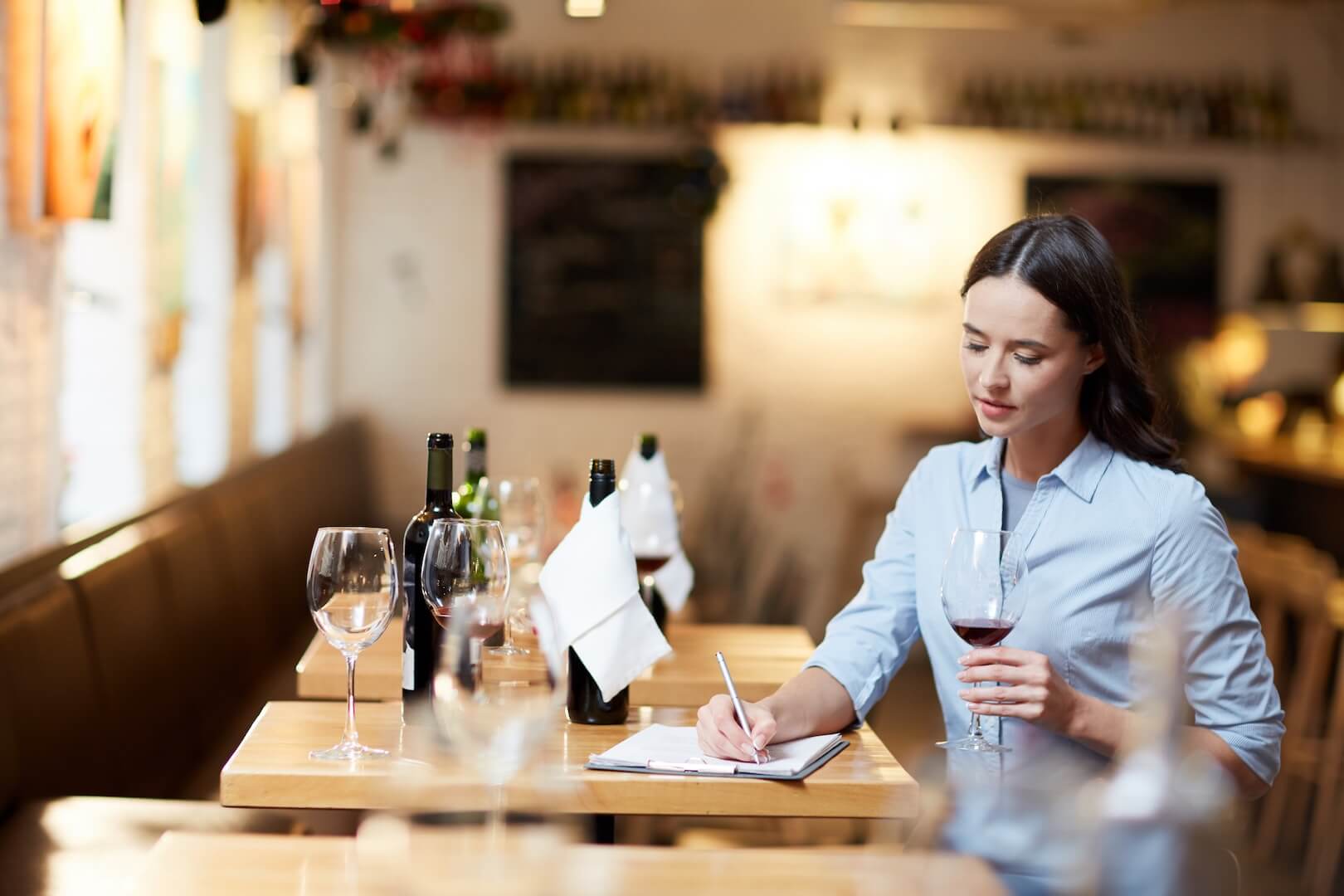Knowing how to appreciate wine isn’t just about drinking it: it’s about taking the time to observe it, smell it, and savor it. Tasting is an art accessible to everyone, which can be discovered step by step, even without technical training. This guide offers a simple and clear introduction, so that every glass becomes a rich and pleasant sensory experience. Follow the guide to learn how to recognize aromas, understand flavors, and familiarize yourself with emblematic grape varieties.
The Three Fundamental Steps of Tasting

The Eye: The first impression comes from the wine’s color, known as the “robe”. Observe its hue (pale yellow, gold, ruby, garnet…), its brilliance, its clarity. Swirl the wine in the glass: slow tears can indicate a certain richness in alcohol or sugar.
The Nose: Bring the glass to your nose without swirling it: this is the “first nose”. Then gently swirl the wine to release the aromas: this is the “second nose”. Three types of aroma are distinguished:
✔ Primary: related to the grape variety (fruits, flowers, vegetal).
✔ Secondary: resulting from fermentation (bread, yeast, butter).
✔ Tertiary: developed with aging (leather, spices, undergrowth).
The Palate: Take a small sip, let the wine spread. Note the attack (soft, lively…), the body, the balance between acidity, alcohol, tannins (for reds), and the persistence on the palate (the “finish”). A good wine leaves a lasting impression.
Recognizing Wine Aromas and Flavors
Wine is a concentration of aromas. To practice, you can use aroma wheels or regularly smell fruits, spices, and flowers.
Common Aroma Families

- Fruity: red fruits (cherry, raspberry), black (blackcurrant, blueberry), yellow (peach, apricot).
- Floral: rose, violet, orange blossom.
- Vegetal: cut grass, boxwood, green bell pepper.
- Spices: pepper, cinnamon, vanilla.
- Woody and Animal: leather, tobacco, wood, undergrowth, wet mouse
Flavors to Identify on the Palate

- Acidity: gives freshness, very present in whites.
- Sweetness: perceptible in sweet or dessert wines.
- Bitterness: slight, often at the finish.
- Tannins: specific to reds, they give structure (dry, astringent).
Practical Guides: Major Grape Varieties and Their Tasting Profiles
To go further in exploring aromas and developing your palate, it is useful to familiarize yourself with the major grape varieties. Each of them has specific aromatic signatures that, with experience, allow you to recognize them blind. These sensory profiles are valuable benchmarks for learning to taste, but also for choosing a wine according to your preferences. Here are the main grape varieties to know.
Here are some emblematic grape varieties and the aromas frequently associated with them:
- Chardonnay: citrus, green apple, butter, hazelnut, brioche (depending on aging).
- Sauvignon Blanc: lemon, boxwood, grapefruit, exotic fruits.
- Riesling: lime, white flowers, mineral notes, sometimes “petrol” with age.
- Viognier: apricot, peach, orange blossom, honey.
- Pinot Noir: cherry, strawberry, undergrowth, sweet spices.
- Merlot: plum, black fruits, chocolate, blond tobacco.
- Cabernet Sauvignon: blackcurrant, bell pepper, cedar, licorice.
- Syrah: violet, black pepper, blackberry, black olive.
Practical Tips for Getting Started
You don’t need to be an oenologist to taste well. A little method, curiosity, and practice are enough to progress quickly. Here are some simple tips to create optimal conditions and make every tasting a moment of discovery and pleasure.
- Organize a tasting at home: 3 to 5 different wines, of the same color, but from varied regions or grape varieties.
- Use a tasting notebook: note robe, nose, palate, general impression.
- Prepare your environment well: no interfering odors, good light, properly adapted wine glasses.
- Master the serving temperature: 8-10 °C for crisp whites, 16-18 °C for structured reds.
- Taste often, but in moderation : regularity refines the palate.
Tasting is a pleasure that is learned and refined. By knowing the keys to understanding wine, by identifying aromas and understanding the sensations on the palate, every glass is transformed into an experience. Wine then becomes a language, an emotion, a journey. And like any language, the more you practice it, the more you understand it. So, ready for your first real tasting?







